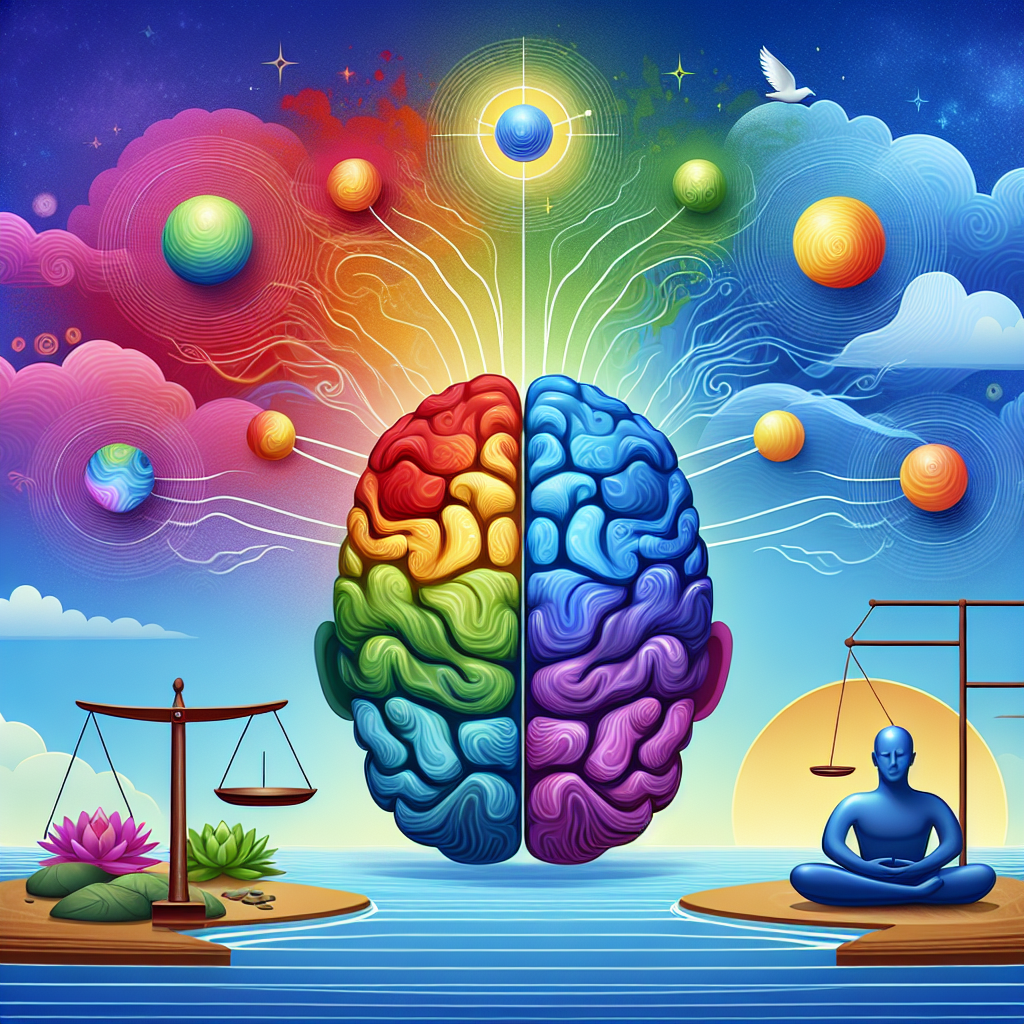
Introduction
In today’s fast-paced world, stress has become a universal experience, affecting mental health and overall well-being. Traditional coping mechanisms often fall short, leading to a surge in the search for alternative therapies. One such method gaining traction is biofeedback therapy. But what is this approach, and how does it serve as a pathway to stress relief and improved mental health? Join us as we delve into the mechanics of biofeedback therapy, explore real-world applications, and equip you with actionable steps to integrate this transformative tool into your life.
Understanding Biofeedback Therapy
Biofeedback therapy is a technique that teaches individuals to control certain physiological functions through the use of electronic monitoring. It helps individuals become more aware of their body’s responses to stress, allowing them to manage conditions ranging from anxiety to chronic pain. Unlike traditional therapies, biofeedback focuses on utilizing one’s own body signals to promote healing and stress relief.
The Basics: How Does Biofeedback Work?
At its core, biofeedback therapy operates on the principle that awareness leads to control. Patients are connected to sensors that measure physiological activities such as heart rate, muscle tension, and skin temperature. This real-time data is displayed on a monitor, providing feedback that enables individuals to recognize when they are experiencing stress or tension. By employing techniques such as visualization, deep breathing, and muscle relaxation, one can learn to alter these physiological states.
Key Components of Biofeedback Equipment
| Component | Description |
|---|---|
| Electrodes | Measure electrical activity in muscles or brain waves. |
| Sensors | Monitor heart rate, respiratory rate, or skin temperature. |
| Display Units | Show real-time feedback to help users understand body responses. |
| Software | Translates physiological signals into usable data. |
The Science Behind Biofeedback
Numerous studies highlight biofeedback’s effectiveness, particularly in the realm of stress management. Research suggests that individuals who practice biofeedback can achieve measurable improvements in anxiety levels and mental clarity. For instance, a 2019 study published in the Journal of Clinical Psychology found that patients who underwent biofeedback reported a 60% reduction in anxiety symptoms over three months.
Case Study: Sarah’s Journey with Anxiety
Sarah, a 32-year-old teacher, struggled with anxiety that was severely affecting her productivity and mental health. After a few unsuccessful attempts with medication, she turned to biofeedback therapy. Through sessions that monitored her heart rate variability, she learned how to calm her physiological responses during stressful situations. By the end of her treatment, Sarah reported not only a dramatic reduction in anxiety but also improved focus in her personal and professional life.
Analysis of Sarah’s Case: Sarah’s story accentuates biofeedback’s potential as a viable alternative to conventional medication, showcasing its role in empowering individuals to take charge of their mental health.
Biofeedback Therapy Techniques
Biofeedback therapy encompasses a variety of techniques. Let’s explore a few commonly used methods to demonstrate how they contribute to stress relief and improved mental health.
1. Heart Rate Variability (HRV) Training
HRV is the variation in time intervals between heartbeats. Research indicates that higher HRV is associated with stress resilience and overall well-being. In HRV training, patients learn techniques to increase their HRV, which can lead to reduced anxiety and enhanced emotional regulation.
2. Electroencephalography (EEG) Biofeedback
Also known as neurofeedback, EEG biofeedback focuses on brain wave patterns. Individuals learn to alter their brain activity to promote relaxation and reduce anxiety. This method has shown impressive results in treating conditions like ADHD and PTSD.
3. Thermal Biofeedback
This method involves monitoring skin temperature to help individuals recognize when they are becoming tense or stressed. By practicing relaxation techniques, they can influence their body’s blood flow, leading to a calming effect.
4. Muscle Tension Feedback
In muscle tension biofeedback, sensors provide feedback on muscle activity. As individuals learn to identify and reduce tension in their muscles, they often experience a corresponding decrease in stress levels.
Integrating Biofeedback into Daily Life
Incorporating biofeedback techniques into your routine requires both commitment and patience. Here’s how to start on this pathway to stress relief and improved mental health.
Establish Your Goals
Clearly define what you want to achieve through biofeedback therapy. Whether it’s reducing anxiety or managing chronic pain, having specific objectives will keep you motivated.
Seek Professional Guidance
Consult a licensed practitioner specializing in biofeedback therapy. They can help tailor the approach to fit your personal needs and ensure that you are using the equipment correctly.
Practice Regularly
Consistency is key. Allocate specific times in your weekly routine for practice. Just like any skill, learning to manage your physiological responses takes time and repetition.
Use Biofeedback Apps
There are numerous apps available that utilize biofeedback techniques. These can help track symptoms, provide reminders to practice skills, and offer guided sessions that you can integrate into your daily life.
The Benefits of Biofeedback Therapy
Engaging in biofeedback therapy can lead to transformative changes. Let’s take a look at some widely recognized benefits.
Stress Reduction
One of the most significant benefits of biofeedback is its ability to reduce stress levels. By learning how to manage bodily responses, individuals often report feeling more in control and at ease.
Enhanced Emotional Regulation
Patients who engage in biofeedback often find themselves better equipped to cope with emotional stressors, leading to improved resilience against anxiety and depressive symptoms.
| Benefit | Description |
|---|---|
| Stress Reduction | Helpless feelings diminish as individuals learn to control their stress responses. |
| Enhanced Emotional Regulation | Improved ability to handle emotional challenges, reducing comorbid anxiety and depression. |
| Better Sleep Quality | Learning relaxation techniques often results in improved sleep patterns. |
| Empowerment and Self-awareness | Individuals gain insights into their emotional and physical states, fostering a sense of agency and confidence. |
Case Study: John’s PTSD Treatment
John, a war veteran, experienced debilitating PTSD symptoms. After undergoing biofeedback therapy that focused on HRV training and EEG feedback, he reported significant reductions in flashbacks and anxiety. The skills he developed empowered him to engage more fully with life, emphasizing how biofeedback is a viable pathway to heal from trauma.
Analysis of John’s Case: John’s compelling journey speaks to biofeedback’s effectiveness as part of a broader treatment strategy for PTSD, illustrating its transformative potential for those facing severe mental health challenges.
Biofeedback and Its Impact on Mental Health
Increasing evidence supports the beneficial role of biofeedback therapy in broader mental health contexts. By effectively managing stress and anxiety, patients often experience improvements in other areas of their lives.
Depression and Anxiety Disorders
Studies indicate that biofeedback can help alleviate symptoms of depression and anxiety disorders, leading to better mental health outcomes. Patients report enhanced mood and decreased feelings of hopelessness.
Chronic Pain Management
Biofeedback has also shown promise in managing chronic pain conditions, such as fibromyalgia and migraines. By teaching individuals to control their physiological responses, they often find relief from both the physical and emotional aspects of their condition.
Inspirational Takeaways for Readers
Integrating biofeedback therapy into your life can be a profound step towards improved mental health and stress relief. Here are some actionable insights:
- Embrace Technology: Use biofeedback apps or tools to kickstart your journey.
- Join a Support Group: Engage with others who are exploring biofeedback to share experiences and tips.
- Stay Informed: Continued education about stress management techniques will enhance your skill set and commitment.
Conclusion
Biofeedback therapy represents a revolutionary approach to stress relief and improved mental health. As we traverse life’s challenges, remember that awareness and control lie within you. Biofeedback is not just a treatment; it is a pathway to empowerment, teaching you to harness the intricacies of your own body for a healthier, more balanced life. Begin your journey today, and unlock the potential for enhanced well-being.
FAQs
1. What conditions can biofeedback therapy help with?
Biofeedback therapy can assist in managing anxiety, depression, chronic pain, ADHD, PTSD, and insomnia among other conditions.
2. Is biofeedback therapy safe?
Yes, biofeedback therapy is considered safe for most individuals. However, always consult with a healthcare provider before starting any new treatment.
3. How long does biofeedback therapy usually take?
The duration of biofeedback therapy varies from person to person but typically ranges from a few weeks to several months, depending on individual goals.
4. Can I do biofeedback at home?
Yes, many biofeedback apps and devices are available for home use. However, initial guidance from a trained professional is recommended.
5. How does biofeedback differ from traditional therapy?
Biofeedback focuses on physiological self-regulation through real-time feedback, whereas traditional therapy often involves talking through issues without immediate physical feedback mechanisms.
In summary, exploring biofeedback therapy can open up new avenues for personal growth and resilience. With a clearer understanding of its mechanisms and benefits, you’re now armed to take the first steps toward a calmer, more fulfilling life.

















